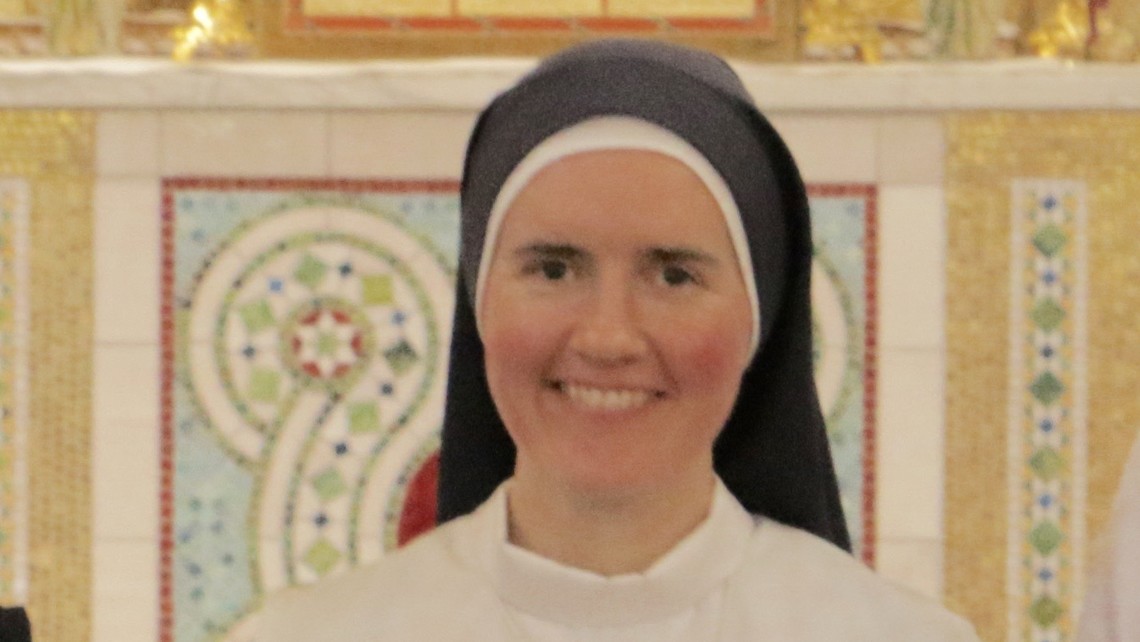
Keeping all these things in our hearts….
By Sister M. Regina
A: Alb and Amice… and Cincture
Our clothing in general is not only useful, in the sense that it protects us from cold and from exposure, but our clothing is also meaningful and symbolic. At a funeral, we traditionally wear black as a means of expression our sorrow at death. At First Holy Communion, a young boy or girl dresses in white to give expression to the purity of his heart in first receiving Jesus. The police officer wears his uniform, in order to be recognizable as an officer of law. The religious sister wears a habit and veil as an outward sign of her consecration to God.
When a priest offers the Holy Sacrifice of the Mass, he is performing the greatest service possible for all mankind, and he dresses suitably for the occasion. Even in the Old Testament, God gave instructions about the vestments of the Levite priests (see Ex 28:4). Each of the vestments the priest wears for liturgical functions has a symbolic meaning. To remind himself of the symbolic meaning of each element of his vesture, there are prayers which accompany the putting on of each garment.
The first garment with which the priest vests is the amice. An amice is a piece of white cloth (typically linen) which covers the priest’s shoulders. As he puts on the amice, the priest prays: “Place, O Lord, on my head the helmet of salvation, that I may overcome the assaults of the devil.” The priest first places the cloth for a moment on his head, and then he places it over his shoulders and uses the ties to secure the amice. The amice covers the priest’s collar and shoulders and that is significant. When the priest offers the Holy Mass, we do not see the clothing he wears outside of Holy Mass. Just as we do not see his usual clothes, so we are encouraged not to see the person of the priest at Holy Mass, but to see Jesus. It is truly Jesus who is offering the Holy Mass in the person of His priest. The priest’s own clothes, his own personality, his preferences, etc., are hidden by his vestments, so that we see more clearly only Jesus.
After the amice, the priest puts on the alb. An alb is a long white tunic, typically made of linen, which extends to the floor, with long sleeves, so that it almost envelops the priest’s whole body. As he puts on the alb, the priest prays: “Purify me, O Lord, from all stain and cleanse my heart, that washed in the Blood of the Lamb, I may enjoy eternal delights.” The color white signifies purity, and it is for that reason that both amice and alb (and the linens used at Holy Mass) are white. The priest is like the white Lamb of God; he is like those who have been washed in the blood of the Lamb (cf. Rev 7:14).
Around the alb, the priest fastens the cincture or girdle, which is a cord fastened around the waist. Although the cincture is often white, it is sometimes in a color to coordinate with the liturgical color of the day. As he fastens the cincture, the priest prays: “Gird me, O Lord, with the cincture of purity, and quench in my heart the fire of concupiscence, that the virtue of continence and chastity may remain in me.” Priests have made the promise of perfect chastity, in order that they may belong wholly to Jesus and give themselves, with Him, to His Bride the Church. The priest prays each day to be faithful to the gift of his priesthood, the gift of Himself for the sake of His Bride the Church.
When we see a priest at Holy Mass, vested in amice, alb and cincture, let us remember to pray for him so that he may become ever more an alter Christus, another Christ, in every way. Jesus Christ, Good Shepherd, grant that all Your priests may be formed ever more after Your Heart!


